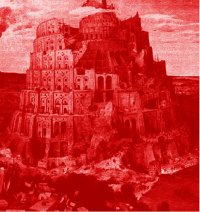Digital library of construction informatics and information technology in civil engineering and construction
Digital library
Paper: sigradi2008_085
| Paper title: | A fachada inclinada na arquitetura moderna brasileira: uma análise com a gramática da forma [Sloping façade buildings in Brazilian modern architecture: characterization of family resemblance with the use of shape grammars] |
| Authors: | Cypriano, Débora; Gabriela Celani |
| Summary: | Traditionally, the historiography of the modern architecture has considered different category ways, based, over all, in periods, regions, external typologies of constructions, function, influences, schools and authors. This categorization is also found in the majority of the studies on modern architecture, as we find in the productions of Zevi (1973) and Benévolo (1960), and also in productions on the Brazilian modern architecture, between which we can cite Mindlin (1956) and Bruand (1971). It was observed, in this research, that the historiography of the modern architecture in Brazil emphasizes the classification for author over all, portraying buildings and biographies of pertaining architects to this period. None of searched books used morphologic criteria to categorize the buildings. The main exceptions are mentioned, in general, the texts of restricted spreading, as thesis, periodic articles and communications in events. Objectifying to consider a new boarding for the study of the Brazilian modern architecture, this work intends to present a classification of modern buildings based in morphologic criteria. In this work, it is intended to use the shape grammar to characterize a specific category of modern buildings. The shape grammar was developed in the decade of 70, by George Stiny and James Gips and will be applied in the determined characterization of a set of Brazilian modern buildings as a family resemblance. The corpus defined for this exercise has as main characteristic the sloping façades presence, a recurrent solution that were explored by the Brazilian modern architects, as Oscar Niemeyer, Affonso Eduardo Reidy and Vilanova Artigas (Figure 01). The adopted method will consist of identifying primitive forms and inferring composition rules from the corpus of analysis selected for the study. These rules application will have to allow the generation of new compositions contends the same analyzed buildings main characteristics. This study is expected to show that it is possible to establish categories of buildings based on morphologic criteria, which can be confirmed by the application of shape rules. It also proposes that the use of precedents in design does not necessarily result in a rigid style, but rather in family resemblances. Being able to recognize such resemblances is an important skill for both professional architects and architecture researchers. With this ability, one can establish relationships between different works, and one can also identify the influence of precedents in design. |
| Type: | |
| Year of publication: | 2008 |
| Keywords: | Sloping façade buildings; shape grammar; Brazilian modern architecture. |
| Series: | CUMINCADes:SIGRADI |
| Download paper: | /pdfs/sigradi2008_085.content.pdf |
| Citation: | Cypriano, Débora; Gabriela Celani (2008). A fachada inclinada na arquitetura moderna brasileira: uma análise com a gramática da forma [Sloping façade buildings in Brazilian modern architecture: characterization of family resemblance with the use of shape grammars]. SIGraDi 2008 - [Proceedings of the 12th Iberoamerican Congress of Digital Graphics] La Habana - Cuba 1-5 December 2008, http://itc.scix.net/paper/sigradi2008_085 |
inspired by SciX, ported by Robert Klinc [2019]





